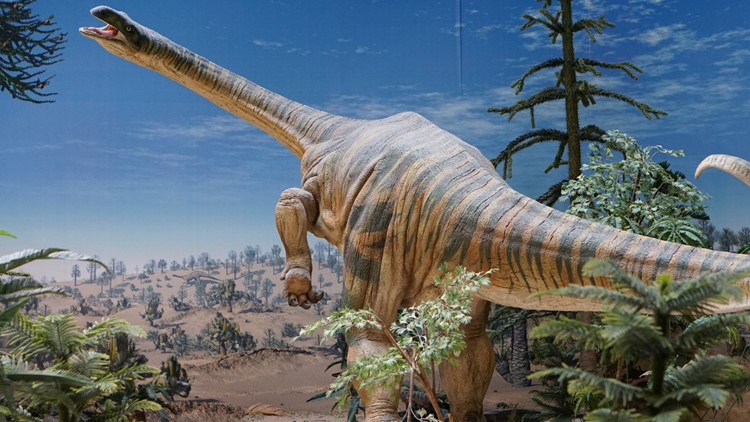BOISE, Idaho — The Discovery Center of Idaho is excited to announce their new exhibit: The World's Largest Dinosaurs.
Starting October 7, guests will be able to tour the exhibit and learn more about the super-sized dinosaurs: the long-necked and long-tailed sauropods. The exhibit will explore the dinosaurs' size, eating habits, reach, skin, heartbeat, breath, dietary habits and more.
The exhibit, organized by the Museum of Natural History, features paleo-biological research that looks at living organisms to make inferences about how these dinosaurs were able to thrive for about 140 million years. The centerpiece of the exhibit will be a life-sized detailed model of a 60-foot-long Mamenchisaurus.
The exhibit will go beyond the bones and show guests how heart rate, respiration, metabolism, and reproduction are linked to size in these colossal creatures.
"The Discovery Center is so excited to bring World's Largest Dinosaurs to the Treasure Valley! While most guests are already familiar with our resident Tyrannosaurus rex, Tinker, we can't wait to expand into the colossal realm of sauropods. Stomp on over to learn about these enormous herbivores!" said Erin Seymour, Discovery Center of Idaho's Education Director.
"Our hope is that visitors of all ages will leave with a better understanding of the lives of sauropods and the way scientists explore and draw conclusions about extinct animals," Seymour said.
The exhibition is curated by Mark Norell from the Museum of Natural History's Division of Paleontology. He is an experienced dinosaur biologist who hopes people can learn more about sauropods.
"This exhibition represents a new era of dinosaur research that leverages recent advances in technology and the expertise of multiple scientific disciplines to understand how the largest animals to ever roam the earth actually lived," said Mark Norell. "It demonstrates how our understanding of these enormous creatures continually evolves and changes in response to new science."



